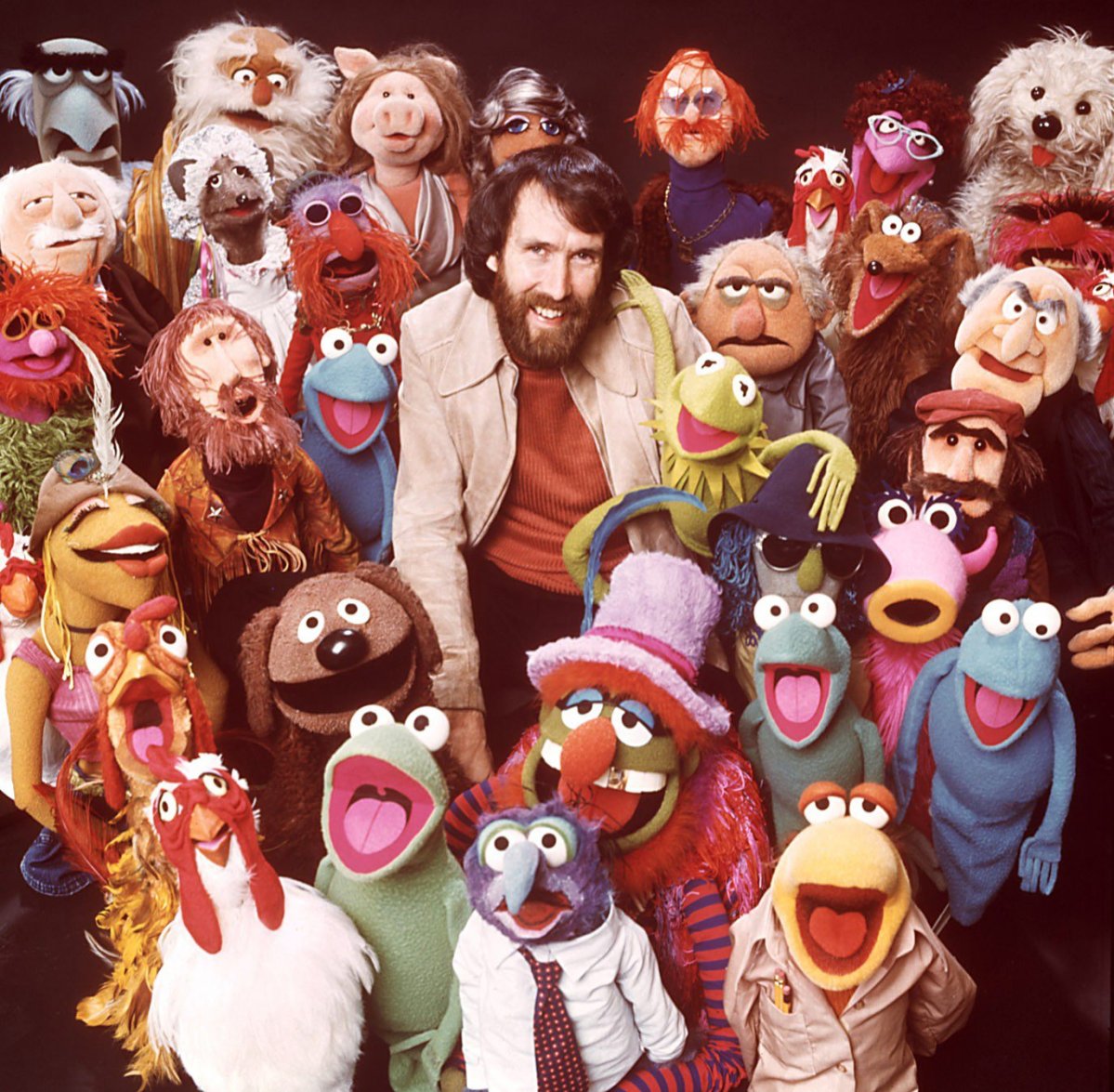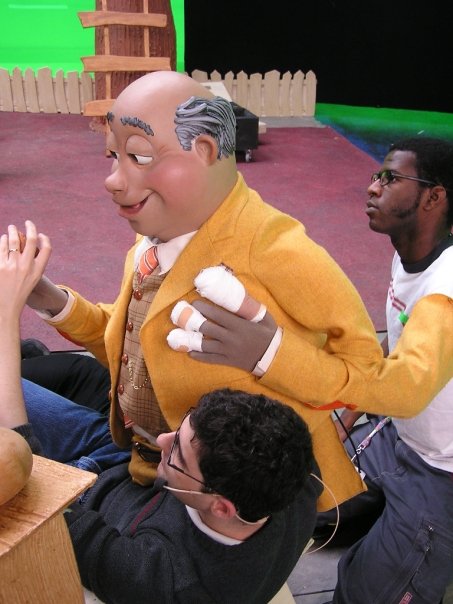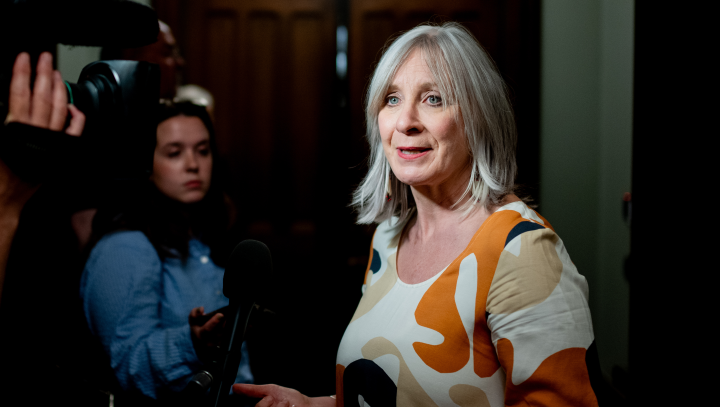
Behind the curtain in a world unknown to most thrives a community of artists and storytellers who with the tug of a rod, string or a precise movement are helping to bring characters to life, and asserting itself beyond child’s play.
The ancient art form has been used as a platform to entertain, educate and for social and political commentary. Now it’s fusing tradition with technology, and is taking centre stage in films and television shows.
Welcome, to the enchanting world of puppetry.
On Lake Ontario, a magical shop called Puppet Island is tucked away from the hustle and bustle of downtown Toronto. With over two decades of experience, Jamie Shannon is no stranger to conjuring characters and creating stories and emotions as complex as any great work of art.
“I make puppets and puppeteer television shows. And I’m very lucky to have done it my entire career,” said Shannon to Global News’ The New Reality.
Shannon’s puppets have graced well-known children shows, from Nanlan’ to the teen staple, Mr. Meaty. And like many puppeteers, Shannon believes what makes puppeteering so unique is that you have the opportunity to bring “the inanimate to life. … You get to design right from the beginning and then you make it and then you give it a voice, and then you give it a personality.”
People may think of puppeteers as only providing the voice of a puppet, but in reality, the art form includes writing, designing, building, performing, editing and directing.
Spellbound by the charm of puppetry, we couldn’t resist the urge to create our own performance:

Yet beneath Shannon’s playful veneer lies a deeper motive for the award-winning puppeteer.
“[Puppetry] has influence. It’s what people watch for entertainment,” Shannon said. “I still think puppets can save the world. I always was I was always motivated by saving the world with puppets.”
And Shannon isn’t the only one.
Puppets are also used as a powerful tool to raise awareness about world issues. In June, hundreds welcomed “Little Amal” to Toronto. Amal, a 3.6-metre (12-foot) puppet symbolizing a 10-year-old Syrian refugee, led a march through the downtown core as part of a global campaign.
Since 2021, more than a million people in close to 15 countries have experienced the puppet, which has become a symbol for human rights and the global refugee crisis.
This fall, Little Amal is visiting key sites in the United States to raise awareness about immigration and migration.
“She’s just a symbol of millions of children,” Amir Nizar Zuabi, the artistic director told the Associated Press. “Just having a community breathe together and walk with Amal for a stretch in the streets becomes a very, very meaningful act.”
Little Amal was created by the Handspring Puppet Company of South Africa, which made the award-winning puppets for the hit show War Horse. She requires four puppeteers at each visit, three to move her head and limbs and one to collect items people give her. A total of nine puppeteers will make the coast-to-coast trek in the U.S. with Little Amal.
In the heart of Atlanta’s vibrant midtown arts district stands a remarkable place that embodies the awe-inspiring world of puppetry.
“The Center for Puppetry Arts is the largest nonprofit in the United States dedicated to the art of puppetry,” said Kelsey Fritz, museum and guest service director at the Center for Puppetry Arts.
At the Center, you’ll discover a puppetry wonderland with a blend of performance, education, and museum all under one roof — appealing to both children and adults alike.
“People are always shocked … that puppetry could be so cool for adults too. But it really is,” Fritz said. “So when they see these beautiful hand-carved wooden pieces or these beautiful hand-cut, punch-dyed leather shadow puppets, I think that kind of opens up people’s eyes a little bit more.”
From marionettes in Europe to shadow puppets in Indonesia, puppetry has a global legacy rooted in each corner of the world, contributing to the art form in its own way.
Here, puppets from around the world, and how they are used, are celebrated and displayed. “In India, but also in Indonesia and Southeast Asia, you kind of see these more spiritual religious uses for puppets … and some of these performances could go all night,” Fritz said.
The Center for Puppetry Arts is also known for its exclusive, one-of-a-kind Jim Henson collection, featuring an array of original or precisely replicated Henson puppets, artifacts and memorabilia, making it one of the most comprehensive collections dedicated to the late pioneer’s work.
“Jim Henson is best known for Sesame Street, The Muppet Show, Fraggle Rock, The Dark Crystal, Labyrinth — a whole bunch of different productions,” Fritz said.
“When our founder had the vision to do this Center that would have all of these components of puppetry, Jim Henson was a really big supporter. So he was here in 1978 with Kermit to cut the ribbon at the opening of the Center, and that relationship with the family is something that we continue to maintain to this day.”
Henson is more than just an icon to puppeteers: he was a visionary. He made characters household names but was also committed to the art of puppetry worldwide. He helped to redefine the way puppets are made for TV and film, both in front of and behind the camera.
“He really cared about the puppetry community as a whole, both domestically and internationally. So in addition to being known for film and television, he also did a lot to support puppeteers and performers from all over the world.“
Nestled within the Center for Puppetry Arts is a place where puppets transform from wood, fabric and string into mesmerizing characters. It’s also where Jason Hines has been the Center’s resident puppet builder for more than 20 years. Here, he and his team are the masterminds behind crafting puppets for the Center’s live show performances.
“We don’t specialize in any one type of puppet. … It really depends on what type of show we’re doing,” Hines explained.
“There’s some shows that are all wooden shows. There are other shows that are all fabric. Sometimes we do a lot of sculpting clay and moulding and casting, so there’s a lot of skills that go into it.”
Creating a puppet by hand can be a slow process, with some puppeteers saying it can take several weeks to months to perfect. But thanks to technology, like computer modelling and 3D printing, creating a puppet has become more efficient.
“I’ve used (the 3D printing machine) for a lot of things. I’ve mostly used it for mechanisms because you can get really precise,” Hines said. He explained parts that would have been moulded, cast or carved can now be printed.
And that has another benefit. “We always need things to be stronger and lighter because puppetry is a very physical act. It’s an art form where you have to actually go and hold things up for an hour or two hours all day. So making things lighter is really key.”
But Hines and the Centre’s team aren’t just building puppets. He’s also preserving the legacy of puppets and puppeteers who came before him, ensuring the magic of puppetry lives on for future audiences to enjoy.

Puppetry is having a moment. From Broadway hits to films like War Horse, Star Wars and The Little Mermaid, puppets are taking centre stage.
“It’s really difficult to turn on TV and not see puppets on commercials and different shows. Movies have puppets in it. There’s so many big stage shows right now that have puppets,” Hines said.
“I don’t see how anyone could think that it’s a dying art form because puppets are everywhere.”
Raymond Carr, a world-renowned puppeteer who has not only worked alongside Hines but has had his work featured at the Center for Puppetry Arts, is known for injecting the traditional art form with a modern, cinematic edge. He often dares to venture his own work into the captivating realms of science fiction and horror for a more grown-up audience.
Though Carr’s fascination with puppetry began at a young age, he wanted to challenge the perception that it’s solely for children, echoing the late Henson himself.
“The idea of puppetry being just for kids is a conversation and honestly something that a lot of artists have had to debate and combat their entire careers,” Carr said.

One pilot for The Muppet Show was edgier and titled The Muppet Show: Sex and Violence.
Henson and his work showed the range, complexities and possibilities of the art form.
“I do think that there is a use for puppetry for all walks of life and all ages, so I find myself pushing to blur those lines and also not to be pigeonholed to be one or the other, because I love children’s television, but I also … like telling stories that are relevant to me as an adult.”
Carr’s work can be found in popular shows, from Doom Patrol to Atlanta, proving that puppetry can and does deal with mature themes and sparks conversation.
“So my last film that I made was a film called Joyriders, and it was a story about three teenage Black kids who find an alien spaceship and accidentally download the consciousness of the alien on the ship and end up taking the spaceship on a joyride to Atlanta,” Carr said.
“And the conversation in the short is whether or not you use your abilities to help your community around you or whether or not you have any obligation to that at all.”
However, Carr’s journey in the puppetry industry has differed from other puppeteers. When Carr first began working as a puppeteer, he says that he only knew of two other Black puppeteers working professionally — Kevin Clash, most well-known for performing Elmo, and Noel MacNeal, known for performing and puppeteering Bear on Bear in the Big Blue House. And in the 1990s, Carr said he saw a real push in the industry for more diversity.
“Because there’s so few of us traditionally in those spaces, you oftentimes become the sounding board and the lead person talking about everything that is relevant to the Black community,” Carr said.
“I feel it as an educational opportunity. I never take it for granted,” he added. “Within the past couple of years, there has been a big explosion of Black puppeteers in puppetry, partially because of the advent of social media.”
And he’s right.
It’s almost 9:30 a.m. on a late summer morning at Crieve Hall Elementary School in Nashville, Tenn., and Megan Piphus is set to amaze dozens of wide-eyed kindergarteners with her puppetry talent. Little do these young students know that she isn’t just a puppeteer, but a trailblazing artist. Piphus is the first full-time, Black female puppeteer on the legendary children’s show Sesame Street.

Broadcast in over 150 countries for more than five decades, Sesame Street‘s mission is to educate, enrich, and empower the lives of children. Alongside iconic muppets such as Big Bird, Elmo and the Cookie Monster, Piphus’ own character, six-year-old Gabrielle, now also calls Sesame Street home.
“I knew the importance of that character and the impact that she would have on girls of colour around the world. Because she’s not just a black American girl. She represents children of colour,” Piphus explains.
Piphus’ journey as a puppeteer began when she was 10 years old, watching and studying VHS tapes of her puppeteer and ventriloquist idol, Sheri Lewis.
” I just fell in love with the magic of bringing something that was inanimate to life,” Piphus recalls. “I studied (Lewis’) voices. I studied the way she carried herself, the way she interacted with her puppets, and emulated everything about her.”
And as the shy, young Piphus perfected her own craft, she realized the power puppetry gave her.
“Puppetry helped me find my voice. I lived deep inside of a shell. I was afraid to express myself and afraid to share the creative ideas that I had. So once I found puppetry, … I felt comfortable speaking on my own and singing on my own.”
Now Pihpus not only shares the confidence puppetry gave her with her own children, but the millions of kids who tune in to watch the educational children’s television series.
“One of my favourite pictures is from my first day on Sesame Street because after we finished recording, everyone gathered around to take pictures of me and Gabrielle,” Piphus recalls.
“And I was wondering why, like, ‘Why is this so important?’ And that kind of made it clear to me, too, that it was a historic moment. And I remember looking at (Gabrielle) and I just smiled and I hugged her as if she was a real person.”
Now Piphus and Gabrielle help children to learn, have fun, and understand profound social issues.
“My very first opportunity with Sesame Street was breaking down racism for kids, breaking down the June 2020 George Floyd protests, for a child to understand what was happening in their world” Piphus said.
“And Gabrielle’s line — I’ll never forget — is: ‘Racism is when someone treats you unfairly or unkindly because of the colour of your skin.’ So, Sesame Street has the ability to take these ginormous world issues, and bring them down to where a child can understand them, process them, and respond to them.”
And on the street where so many famous characters and puppeteers have made history with their performances, Megan is a shining example of the future of puppetry.
“I hope my legacy is spreading hope and joy throughout the world. Simple as that.”
— with files from the Canadian Press

















































































Comments